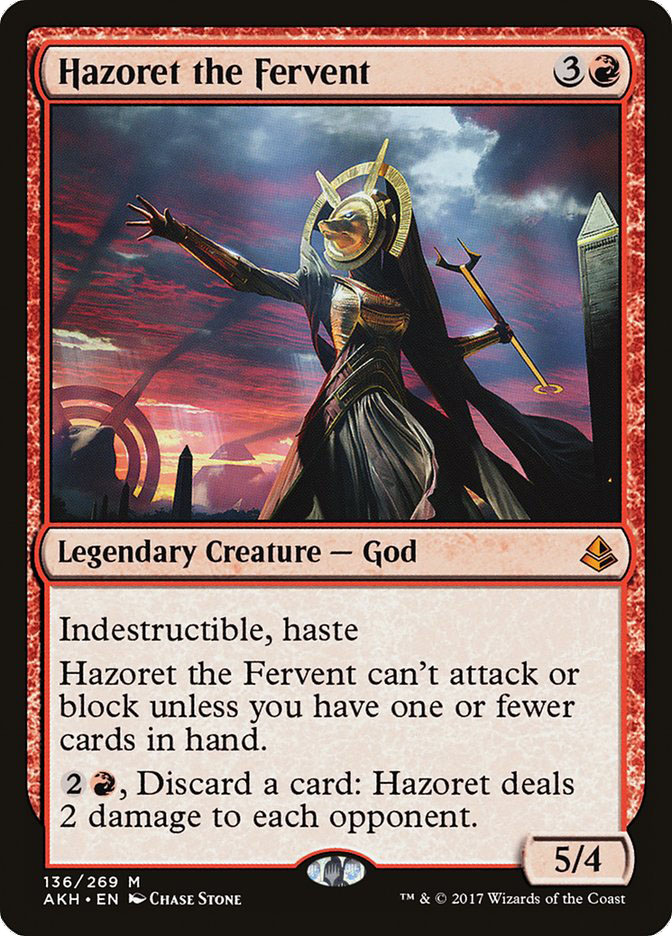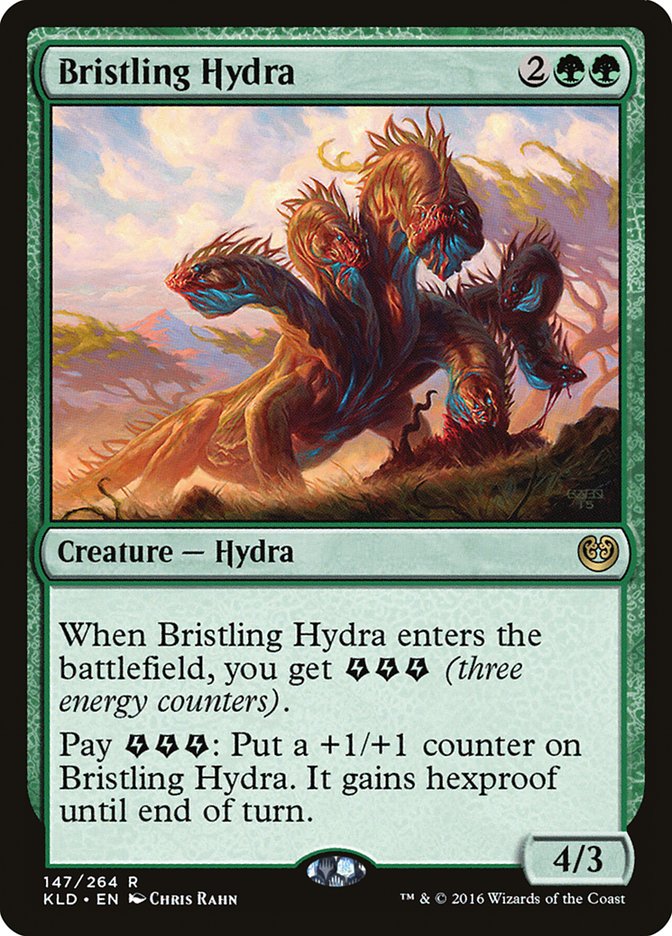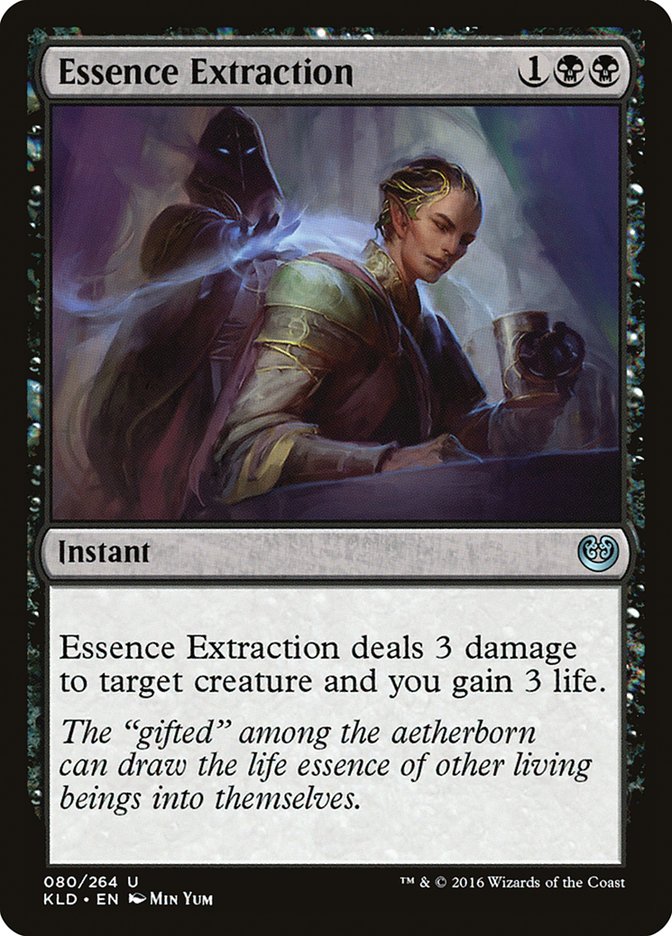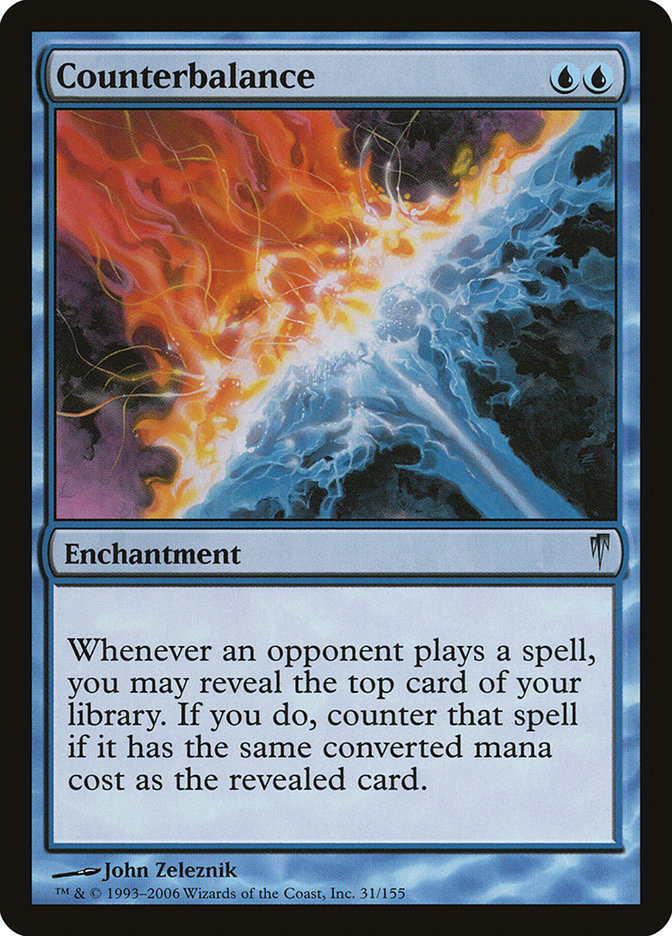
No, you did not accidentally click on an Adrian Sullivan article. This happened. It’s real.
I registered U/B Control at the World Championship.
To some, that may be no surprise. They might remember me casting Sphinx’s Revelation en route to my first Pro Tour Top 8. However, that was eons ago.
Haven’t you heard? I’m a green mage now.
I’ll be honest; I think control decks are pretty bad in general, at least compared to how overpowered they were in 2002. That said, there’s a time and a place for everything, and that happened to be last weekend.
Take a look at the premier threats in Standard right now:
“Yeah, I’ll Essence Scatter that.”
Essence Scatter is the best removal spell in the format because it handles everything while also ignoring most text boxes on the creatures it’s dealing with. Additionally, it’s only two mana, which is above rate compared to anything else you’ll get in this format. It’s the cleanest answer available.
Of these threats, The Scarab God is the most powerful and most resilient. You can jam it on Turn 5 like a Morphling or hold it forever and play it with protection like a…well, a Morphling.
A couple of weeks ago I pointed out that The Scarab God was being heavily targeted, and while that’s still true, this deck doesn’t care. If your opponent has something like Confiscation Coup, you can alter your gameplan to fight it. Decks that splash The Scarab God, such as Four-Color Energy, typically don’t have such a luxury.
The Scarab God is your way to go over the top of everyone else by providing an insurmountable amount of value.
The other card that provides inevitability?
For two mana I get a Rampant Growth, card filtering, and card advantage? What the hell? This card is incredible! This is Jace, Vryn’s Prodigy level of busted and it might even be better than Jace overall.
Getting seven cards in our graveyard happens with regularity, typically around Turn 5 or 6. Sam Black and Josh Utter-Leyton wanted to maximize their chances of flipping it on Turn 4 by playing a bunch of Evolving Wilds, but that’s completely unnecessary. Search for Azcanta will transform by playing a regular game of Magic. Additionally, you’re in no real rush to transform into Azcanta, the Sunken Ruin. Having the extra land is always appreciated, but not if it comes at the cost of not having a mana to use on an earlier turn by replacing a basic land with an Evolving Wilds.
So you have your engine, your finisher, and your primary defensive tool. Where do you go from here?
Unfortunately for U/B, you can’t build the deck like a traditional control deck because there are very few viable sweepers. The closest thing to a catchup mechanic lies in your large finishers, The Scarab God and Torrential Gearhulk. Your only other options are mopey sweepers like Bontu’s Last Reckoning and Yahenni’s Expertise. Neither option is particularly attractive because of their immense downsides.
Instead, you have to curve out with your opponent and answer each threat as they present themselves. Should you fall behind, you’ll have to make it up on a later turn by playing multiple spells.
After that, you have two main gameplans. You can play a draw-go game while activating Azcanta every turn and dealing with their threats, eventually burying your opponent, or you can drop a large creature and protect it. Azcanta tends to be the better strategy in Game 1 because they’ll have more copies of removal spells that will turn investing a large amount of mana into a creature into a losing proposition.
I thought the metagame was going to be a mix of green decks (mostly Temur, but potentially some G/B or Sultai) and some Ramunap Red. Players tend to have their biases and probably won’t stray from that too much when the stakes are so high. I had no such reservation.
This is what I registered:
Creatures (5)
Lands (26)
Spells (29)

For the most part, you’re trying to deal with your opponent’s threats, make land drops, and find some way to win the game, either through raw card advantage or a big creature.
Five large creatures is about what I would consider normal for this archetype. Six feels heavy but releases much of the burden from Search for Azcanta. Four finishers, like Sam Black played, is a viable option, but one that leaves you without as many spots where you can play Protect the Queen.
Disallow is a necessity for the longer games where you’re winning with Azcanta. Supreme Will might do the same job most of the time, but when it fails to do that job, you’re going to wish you had Disallow instead.
There is an argument for being able to use your mana every turn. There will certainly be games where your opponent waits until Turn 5 to drop their Hazoret the Fervent or Chandra, Torch of Defiance in order to stop your “Glimmer turn,” but you just have to live with the fact that you probably cannot punish that behavior. They could also not walk into your open mana out of fear of Censor. Essence Extraction allows you to punish them some of the time, but not very often.
>
Speaking of Essence Extraction, you could consider it a maindeck hate card for Ramunap Red, but that’s not the entire story. Each activation of Azcanta will likely yield an additional card and sometimes an additional answer. That makes lifegain more valuable than it would traditionally be, as it will probably translate into more natural draw steps plus Azcanta activations that snowball quickly.
Taking out a Longtusk Cub on the play or a Whirler Virtuoso in the late-game means that Essence Extraction is useful at many stages of the game. While it’s not quite as clean as something like Hero’s Downfall, it does its job. Aether Meltdown, while slightly better against Longtusk Cub, isn’t nearly as useful across the board.
After playing several games with it, Glimmer of Genius clearly wasn’t cutting it. With red removal, you get enough early options that you can typically slow down their development, which gives you the time to spend casting a spell that only draws you cards. With U/B Control, and especially in the draws without Fatal Push, you often don’t have that sort of time. If you do, you will probably win anyway.
Glimmer of Genius had to go, and we played Hieroglyphic Illumination instead. Having a draw-two is useful for ensuring you hit your land drops, but most of the time you’re going to be under pressure, and therefore cycling it instead of casting it. With Search for Azcanta and The Scarab God, that’s a fine play to make, because you’re mostly trying to buy time. We kept the one Glimmer of Genius as a fifth copy of Hieroglyphic Illumination and because we wanted a certain amount of velocity.
Opt was a candidate, but Standard is fast and you can’t afford to have too much air. Maybe that’s wrong and there’s a better version that has four Opts, more blue sources, and a lower land count, but I’d be more willing to try that in U/R where the mana requirements aren’t as strict.
My teammates were so high on Evolving Wilds and so anti-Opt that it was confusing. Both cost you a mana, so it stands to reason that if Evolving Wilds is worth playing, then so is Opt, assuming the deck space is not actually an issue. I could imagine cutting a land, a creature, Glimmer of Genius, and a removal spell for Opts and seeing what happens.
Temur Energy
Creatures (23)
- 4 Longtusk Cub
- 3 Bristling Hydra
- 4 Whirler Virtuoso
- 4 Servant of the Conduit
- 4 Rogue Refiner
- 4 Glorybringer
Lands (22)
Spells (15)

We expected a lot of decks with Forests and chose to play U/B Control as a result. Traditionally, those matchups are phenomenal. However, the list that Peach Garden Oath showed up with is tougher. They have ways to beat The Scarab God maindeck and more disruption and staying power post-sideboard. That said, I’d still say U/B Control is a solid favorite, even if it didn’t play out that way.
The sideboard plan against Temur is light, although that can change dramatically depending on their list. For example, against PGO’s Temur list, it was pretty clear they were going to be a little more spell-heavy. If that’s the case, Duress can be a potent weapon, at least in small doses.
Shave on your slower cards and cut a creature in the face of Essence Scatter and Confiscation Coup. If you want to board in additional cards, some of the clunkier removal can go. For the most part, we’re bringing in Vizier of Many Faces and calling it a day.
Ramunap Red
Creatures (23)
- 4 Bomat Courier
- 3 Kari Zev, Skyship Raider
- 4 Hazoret the Fervent
- 4 Ahn-Crop Crasher
- 4 Soul-Scar Mage
- 4 Earthshaker Khenra
Planeswalkers (1)
Lands (24)
Spells (12)

As is the case with most matchups, Ramunap Red is significantly easier in Game 1. Post-sideboard, they get to remove their semi-dead Abrades and Shocks for real threats. Those threats are still relatively slow, so your counterspells are live against them, but if you have to tap out to deal with their early pressure, they might stick a big threat and beat you with it.
The biggest fear is them having an early threat that goes uncontested for several turns, as the damage racks up quickly. Essence Extraction and Vraska’s Contempt can offset that by some degree, but it’s not difficult for them to burn you out from ten, so you have to be careful.
Sam’s plan was to load up on answers and trade all the way up to Torrential Gearhulk, where he could start flashing back Vraska’s Contempts. I disliked that plan because it put too much emphasis on having basically a perfect draw. The games I found myself winning were when I was able to slam The Scarab God on Turn 5 and race them, which is why I wanted the extra God over Torrential Gearhulk.
We have a lot of cards to sideboard out and not a ton of great options to bring in. Contraband Kingpin shuts down their most aggressive draws, but even it can run afoul of Rampaging Ferocidon, Falter effects, and Soul-Scar Mage plus a burn spell. The fact that you absolutely cannot let Chandra resolve once you have a Kingpin on the battlefield is another detriment. I wish there was a better option, but everything else is too narrow. Search for Azcanta can almost always go here, as can the Glimmer of Genius.
Overall, Ramunap Red isn’t a great matchup, but it’s winnable. If you win the die roll or have a Fatal Push in your opening hand, I like your chances, but things need to line up well for you.
Control
Creatures (5)
Lands (26)
Spells (29)

Control mirrors are pretty silly. Both decks have copious amounts of removal with no way to really get ahead. The only way to have an edge in Game 1 is with some impossible-to-deal-with win condition, and now that the Azcanta cat is out of the bag, that win condition is Ipnu Rivulet.
Granted, it’s a high cost to pay for just one matchup, as the damage and the fact that your Drowned Catacombs will enter the battlefield tapped more often is a huge opportunity cost.
Realistically, your best bet is to get some additional threats into the maindeck that don’t cost as much as the threats you’re already playing. Gonti, Lord of Luxury is what I would play if I deemed that necessary.
You could potentially play something like Dynavolt Tower, which conveniently dodges PGO’s Essence Scatters, but is admittedly weak against their Confiscation Coups. I don’t think there’s enough time to work on Dynavolt Tower for Nationals, but maybe it will be good at Pro Tour Ixalan.
Assuming everything is equal, Game 1 in the control mirror will come down to Search for Azcanta advantage, but even that’s not a lock. The player without Search can still deal with the opponent’s threats and will have an easy time decking them.
The post-sideboard games are much more straight-forward. Each player should have additional counterspells, Duresses, and threats, so eventually someone will put themselves in a position to actually win the game.
I was completely even at the World Championship: 3-3 in Draft and 4-4 in Standard. While not awe-inspiring, it was good enough for ninth place. If I could do it all over again, I happily would. It wouldn’t surprise me if I could get an additional win in draft and another two in Standard. Things mostly didn’t break well for me.
I lost two mirrors to teammates who “expected more control decks,” which basically meant they had an edge against me. Beats.
The other two losses came late in the tournament to PGO members Huey Jensen and Owen Turtenwald. I had beaten Reid Duke earlier, so I liked my chances, but both matches were lopsided affairs in all six games, often coming down to mulligans. Overall, rather unfortunate, as I had hoped to at least play some sweet matches.
Our deck was great for the tournament, although it likely gets worse from here. People will test against our deck, figure out how to sideboard, and likely play some additional hate for us. Additionally, the real world is more diverse than the inbred 24-player World Championship metagame, so you can expect to face weirder decks that will give you a tougher time.
U/B Control is still among the best decks in Standard, but it’s worse at any other tournament that isn’t the World Championship.








